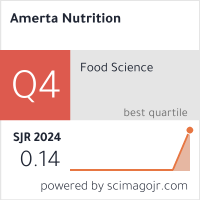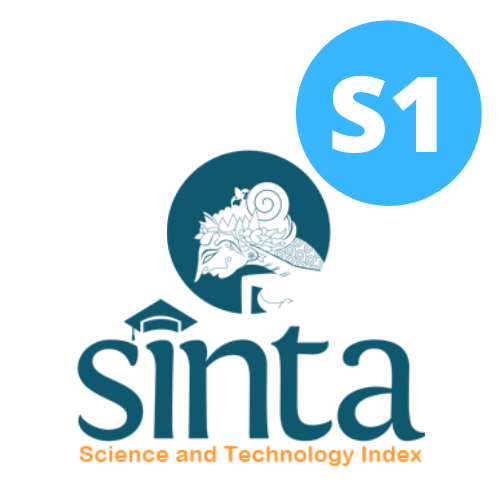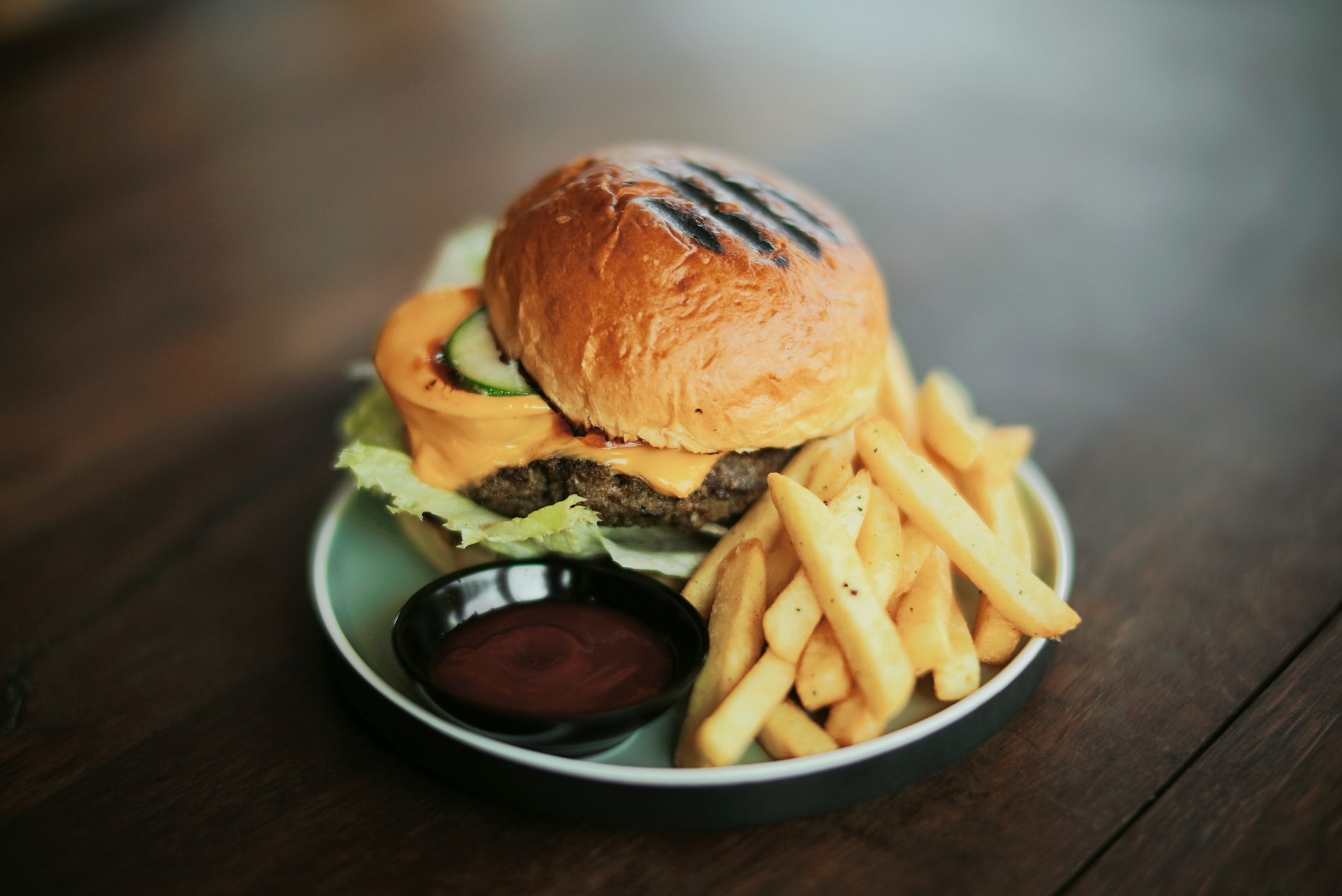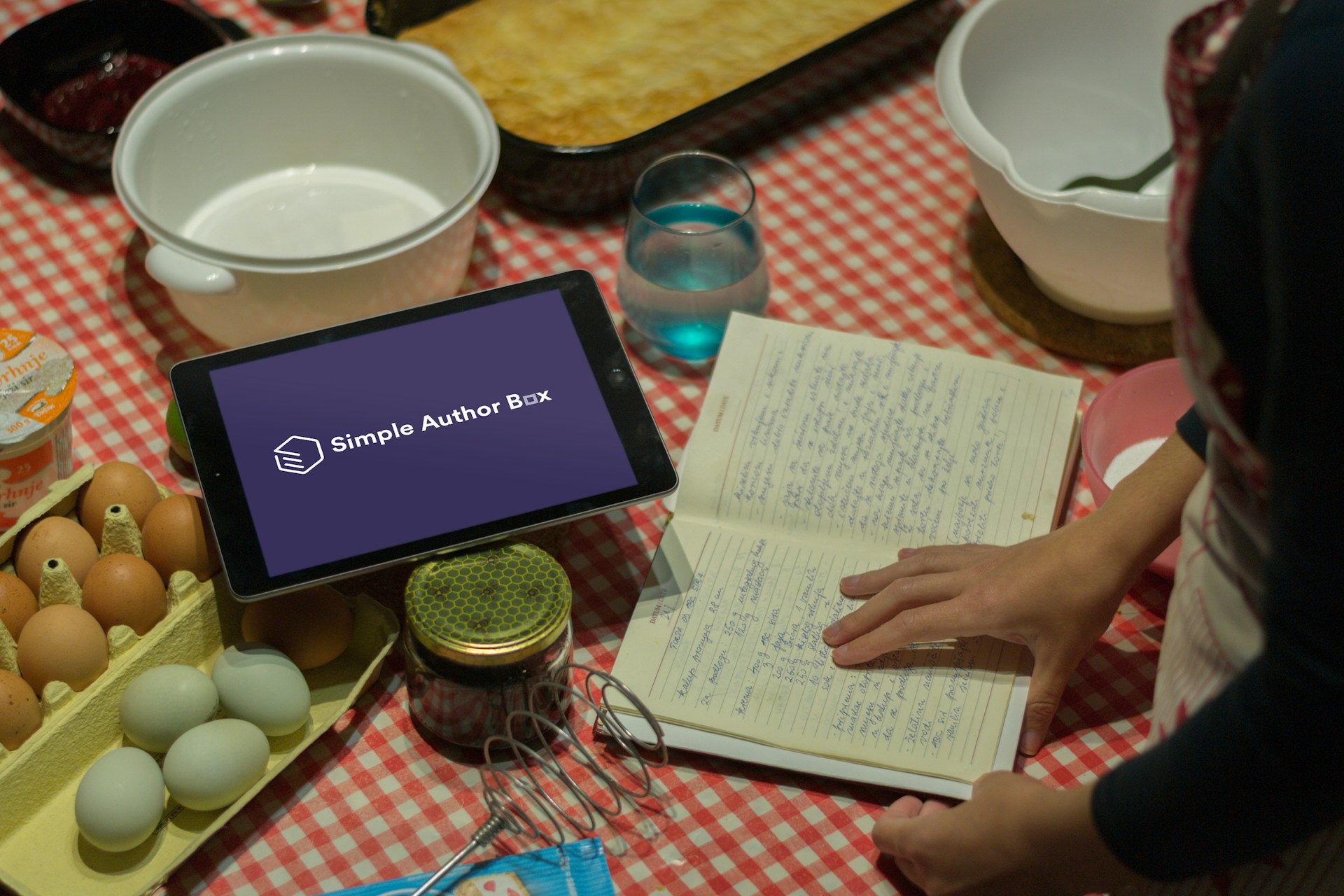Sensory Evaluation and Nutritional Composition of Waffle with Chaya Leaf (Cnidoscolus aconitifolius) Substitution as an Alternative Snacks for Adolescent Girls' Anemia
Evaluasi Sensori dan Komposisi Gizi Wafel Substitusi Daun Pepaya Jepang (Cnidoscolus aconitifolius) sebagai Camilan Alternatif untuk Remaja Putri Anemia
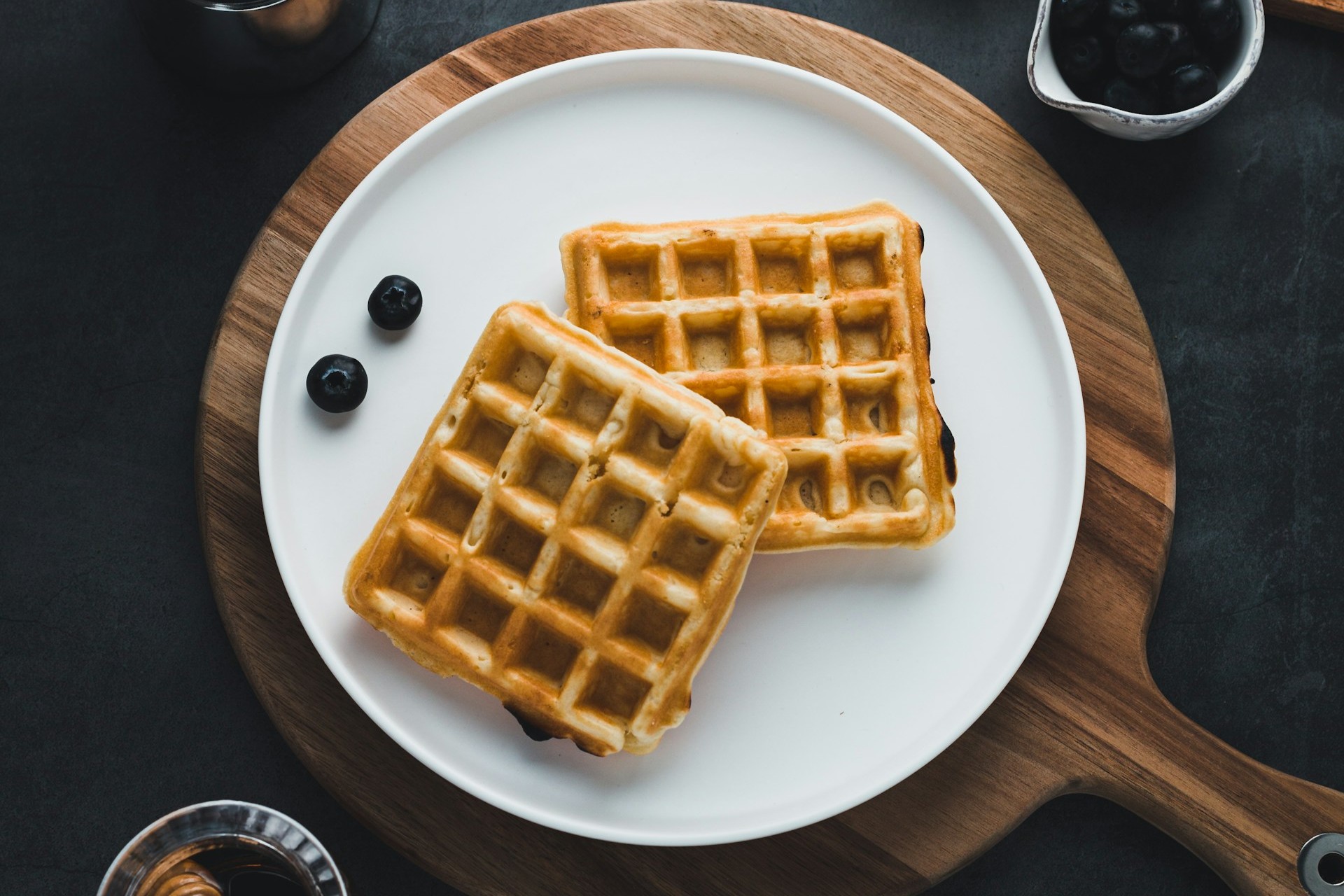
Background: Waffle is sweet food like cake but cooked differently, are a beloved snack for teenagers. Chaya is a leafy vegetable that is often consumed because it has a nutritional content that is beneficial for health and can be made into snacks such as waffles.
Objectives: This study aimed to evaluate the nutritional and cyanide content of Chaya Leaf waffles using a selected formula as a potential solution for iron deficiency anemia in adolescents girls.
Methods: Experimental research with a randomized complete design was conducted, varying the amount of Chaya Leaf are 0g, 25g, 50g, and 75g in waffle formulations. Sensory analysis is based on hedonic test results which are evaluated using SPSS version 25 analyzed using one-way ANOVA followed by DMRT (Duncan's Multiple Range Test) analysis, while proximate analysis was conducted following SNI 4305:2018 guidelines. Iron content was measured using atomic absorption spectrophotometry (SNI 01-2896-1998) and cyanide content using the acid titration method and the wet titration method based on SNI 4305:2018.
Results: A hedonic test involving 30 semi-trained panelists favored formula F4, containing 75 g of Chaya Leaf, for its color (p-value<0.001), taste (p-value=0.001), and texture (p-value=0.019). In 100 g of waffle, water content was 54.15%, ash content was 2.06%, protein was 20.90%, fat was 12.16%, and carbohydrates were 63.67%. The iron content was 0.43 mg, and cyanide levels were found to be 0.919 mg/g.
Conclusions: Formula F4 was preferred by panelists for its high iron content and safe cyanide levels, suggesting the potential of Chaya Leaf waffles as a nutritious snack for teenagers.
Mosiño, A., Villagómez-Estrada, K. P. & Prieto-Patrón, A. Association between School Performance and Anemia in Adolescents in Mexico. Int. J. Environ. Res. Public Health 17, (2020). DOI: 10.3390/ijerph17051466.
Kuri-García, A., Chávez-Servín, J. L. & Guzmán-Maldonado, S. H. Phenolic Profile and Antioxidant Capacity of Cnidoscolus Chayamansa and Cnidoscolus Aconitifolius: A Review. J. Med. Plants Res. 11, 713–727 (2017). DOI: 10.5897/JMPR2017.6512.
Ifeanacho Mercy, O., Ikewuchi Catherine, C. & Ikewuchi Jude, C. Nutrient and Bioactive Phytochemical Compositions of Cnidoscolus Aconitifolius. Malaysian J. Biochem. Mol. Biol. 22, 26–36 (2019).
Briawan, D., Khomsan, A., Alfiah, E., Nasution, Z. & Putri, P. A. Preference for and Consumption of Traditional and Fast Foods among Adolescents in Indonesia. Food Res. 7, 211–226 (2023). DOI: https://doi.org/10.26656/fr.2017.7(4).156.
Arza, P. A. & Anggela, N. Development of Waffles by Adding Catfish Bone Flour (Pangasius hypophthalmus) and Oyster Mushroom Powder (Pleurotus ostreatus). J. Gizi dan Diet. Indones. (Indonesian J. Nutr. Diet. 6, 28 (2019). DOI: http://dx.doi.org/10.21927/ijnd.2018.6(1).28-32.
Lichanporn, I., Nanthachai, N., Tanganurat, P. & Akkarakultron, P. Effect of Concentrated Chaya (Cnidoscolus chayamansa) Vegetable Juice on Quality of Reduced Sugar Roselle Jam. J. Appl. Res. Sci. Technol. (JARST), 20, 1–11 (2021). DOI: https://doi.org/10.14456/jarst.2021.1.
Arza, P. A. Pengaruh Lama Waktu Perebusan terhadap Kandungan Zat Besi dan Sianida Daun Pepaya Jepang (Cnidoscolus Aconitifolius). Darussalam Nutr. J. 7, 104–109 (2023). DOI: 10.21111/dnj.v7i2.10742.
Temesgen, M., Yegerem, L. & Yilma, M. Phenolic Acid and Amino Acid Composition of Ethiopian Chaya ( Cnidoscolus chayamans a). Int. J. Food Prop. 25, 227–236 (2022). DOI: 10.1080/10942912.2022.2026953.
Hutasingh, N. Exploring Flavor Enhancer Metabolites of Chaya Leaf (Cnidoscolus spp.). (Chulalongkorn University, 2022). DOI: 10.58837/CHULA.THE.2022.165.
Panghal, A., Shaji, A. O., Nain, K., Garg, M. K. & Chhikara, N. Cnidoscolus Aconitifolius: Nutritional, Phytochemical Composition and Health Benefits – A Review. Bioact. Compd. Heal. Dis. 4, 260–286 (2021). DOI: https://doi.org/10.31989/bchd.v4i11.865.
Jaroennon, P. & Manakla, S. Evaluation of Physicochemical, Sensory, Antioxidant and Nutritional Properties of Latte Drinks from Chaya (Cnidoscolus aconitifolius) Leaf. Thai J. Public Heal. 51, 25–32 (2021).
Hutasingh, N. et al. Metabolite Profiling and Identification of Novel Umami Compounds in The Chaya Leaf of Two Species using Multiplatform Metabolomics. Food Chem. 404, 134564 (2023). DOI: 10.1016/j.foodchem.2022.134564.
Huber, R. & Schoenlechner, R. Waffle Production: Influence of Batter Ingredients on Sticking of Fresh Egg Waffles at Baking Plates—Part I: Effect Of Starch and Sugar Components. Food Sci. Nutr. 5, 504–512 (2017). DOI: 10.1002/fsn3.424.
Rodrigues, M. M. R., Ojeda, J. C. M., Díaz, M. G. & Allende, D. K. B. Use of Chaya (Cnidoscolous chayamansa) Leaf for Nutritional Compounds Production for Human Consumption. J. Mex. Chem. Soc. 65, 118–128 (2021). DOI: https://doi.org/10.29356/jmcs.v65i1.1433.
Wongnhor, M., Malaithong, W. & Khonyoung, D. Effects of Dried Chaya Leaf Meal Inclusion in The Diet on Growth Performance and Blood Profiles in Thai Native Chicken (Pradu Hangdum). J. Adv. Vet. Anim. Res. 10, 51–56 (2023). DOI: 10.5455/javar.2023.j651.
Badan Standarisasi Nasional. Kue Basah SNI 01-4309-1996. (1996).
Nurcahyani, R. R. A., Aminah, S. & Kurniawan, M. F. Karakteristik Organoleptik dan Kimia Snack Nori dari Daun Chaya dan Tapioka. J. Pangan dan Gizi 12, 60–70 (2022). DOI: https://doi.org/10.26714/jpg.12.1.2022.60-70.
Avila-Nava, A. et al. Development of a Functional Cookie Formulated with Chaya (Cnidoscolus aconitifolius (Mill.) I.M. Johnst) and Amaranth (Amaranthus cruentus). Molecules 27, 7397 (2022). DOI: 10.3390/molecules27217397.
Yusuf, A. B., Abubakar, J. & Lawal, A. Phytochemicals Screening and Nutritional Profile of Cnidosculus aconitflius Leaf Collected in Birnin Kebbi, Nigeria. Sch. Int. J. Biochem. 5, 85–89 (2022). DOI: 10.36348/sijb.2022.v05i06.002.
FAO. Codex Committee on Contaminants in Foods Discussion Paper on Hydrocyanic Acid and Mycotoxin Contamination in Cassava and Cassava-Based Products. (Food and Agriculture Organization of the United Nations, 2021).
Odoemelam, C. S. et al. Characterization of Yellow Root Cassava and Food Products: Investigation of Cyanide and Β-Carotene Concentrations. BMC Res. Notes 13, 1–7 (2020). DOI: https://doi.org/10.1186/s13104-020-05175-2.
Abraham, K., Buhrke, T. & Lampen, A. Bioavailability of Cyanide after Consumption of A Single Meal of Foods Containing High Levels of Cyanogenic Glycosides: A Crossover Study in Humans. Arch. Toxicol. 90, 559–574 (2016). DOI: 10.1007/s00204-015-1479-8.
Gobena, D. A. et al. Chaya (Cnidoscolus Aconitifolius) for Enhancing Food and Nutrition Security of Arid Lands of Ethiopia. J. Nutr. Food Secur. 8, 461–467 (2023). DOI: https://doi.org/10.18502/jnfs.v8i3.13293.
González-Laredo, R. F., Flores De La Hoya, M. E., Quintero-Ramos, M. J. & Karchesy, J. J. Flavonoid and Cyanogenic Contents of Chaya (Spinach Tree). Plant Foods Hum. Nutr. 58, 1–8 (2003). DOI: https://doi.org/10.1023/B:QUAL.0000041142.48726.07.
Kuliahsari, D. E., Sari, I. N. I. & Estiasih, T. Cyanide Detoxification Methods in Food: A Review. IOP Conf. Ser. Earth Environ. Sci. 733, (2021). DOI: 10.1088/1755-1315/733/1/012099.
Copyright (c) 2025 Amerta Nutrition

This work is licensed under a Creative Commons Attribution-ShareAlike 4.0 International License.
AMERTA NUTR by Unair is licensed under a Creative Commons Attribution-ShareAlike 4.0 International License.
1. The journal allows the author to hold the copyright of the article without restrictions.
2. The journal allows the author(s) to retain publishing rights without restrictions
3. The legal formal aspect of journal publication accessibility refers to Creative Commons Attribution Share-Alike (CC BY-SA).
4. The Creative Commons Attribution Share-Alike (CC BY-SA) license allows re-distribution and re-use of a licensed work on the conditions that the creator is appropriately credited and that any derivative work is made available under "the same, similar or a compatible license”. Other than the conditions mentioned above, the editorial board is not responsible for copyright violation.






